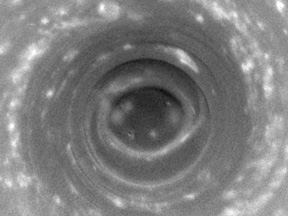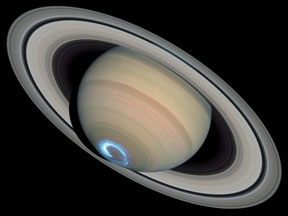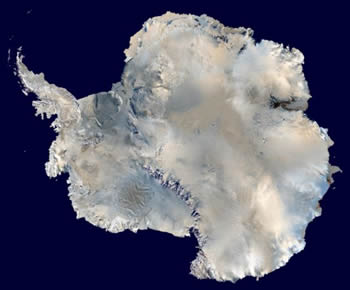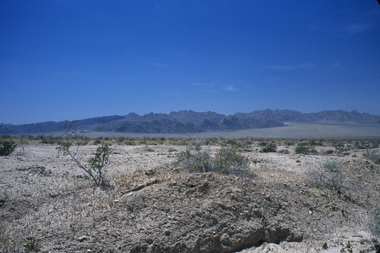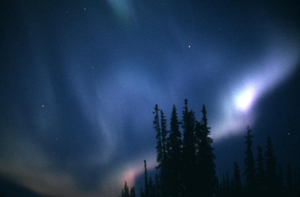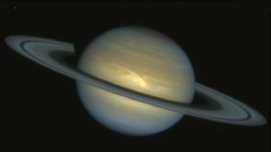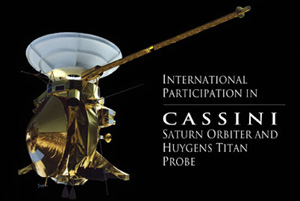Click on image for full size
Image courtesy of NASA/JPL/Space Science Institute.
Saturn's Southern Polar Vortex
Saturn's South Pole is an extremely stormy and surprisingly warm region. A vast, hurricane-like storm centered on the South Pole dominates the area. Astonishingly, the pole is also warmer than any other place on the ringed planet.
Infrared images from the Keck telescope in Hawaii in 2005 provided astronomers with a "thermal map" of Saturn. With it, scientists were able to see which parts of Saturn are especially warm and which places are cooler. To their astonishment, the astronomers saw that Saturn's South Pole is the hottest part of the ringed planet! A bright dot at the pole in the infrared image indicated that the temperature at the pole is about 60° C (108° F) higher than at the equator! One scientist commented that if this temperature pattern were seen on Earth, it would be "like discovering that Antarctica is hotter than the Sahara Desert". Saturn's Southern Hemisphere has been experiencing the summer season, and thus greater warming by the Sun, for several years (a year on Saturn is almost 30 Earth years long, so seasons on the ringed planet last 7+ years). However, the extent of the heating at the pole and the sharp rise in temperature very close to the pole cannot be explained by seasonal warming alone.
On Earth, a large atmospheric structure called a "polar vortex" often forms over each pole during its winter season. Earthly polar vortices trap especially cold air around the poles. On Saturn, the atmospheric flows around the South Pole are reminiscent of the polar vortex structures on Earth. However, they seem to trap warmer air - not colder - near the poles. Scientists are trying to figure out why this is the case.
High temperatures at the pole probably provide the energy that drives the enormous hurricane-like storm found there. Discovered by the Cassini spacecraft in October 2006, the storm has spiral cloud bands, high wind speeds, and a gigantic eyewall reminiscent of hurricanes on Earth. Unlike Earthly hurricanes, which move around, Saturn's "polar hurricane" seems locked in place over the pole.
How big of a storm is this "polar hurricane"? Much larger than its Earthly counterparts, the storm on Saturn extends outward thousands of kilometers (miles) from the pole. The central eye is about 1,500 kilometers (930 miles) in diameter. Clouds in the eyewall tower 30 to 75 kilometers (19 to 47 miles) above their surroundings, some 2 to 5 times higher than in hurricanes on Earth. Winds around the polar vortex can reach speeds of 550 km/hour (342 miles per hour), spawning hundreds of smaller, swirling storms.
Saturn's "polar hurricane" is the first storm with an eyewall discovered beyond Earth. Even Jupiter's Great Red Spot, which is much larger than Saturn's storm, does not have an eye or an eyewall.


